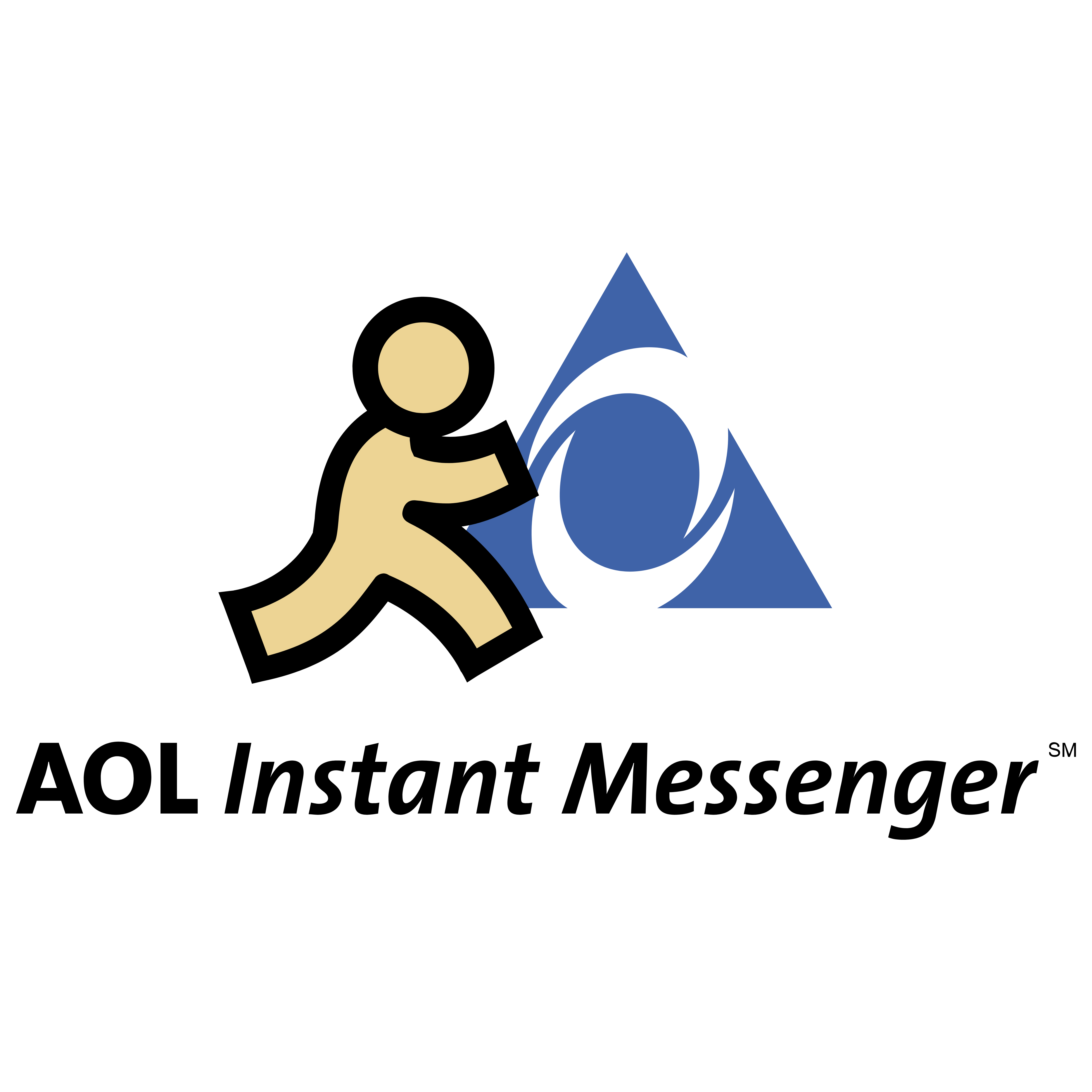Remember the days when AOL was king of the messaging world? It's hard not to feel nostalgic when you think about those early days of online communication. Back then, AOL Instant Messenger (AIM) wasn't just a tool—it was a cultural phenomenon that shaped how we interacted with friends, family, and even strangers. Messaging AOL style wasn't just about sending messages; it was about building connections in a world that was just beginning to go digital.
For those who grew up in the late '90s and early 2000s, messaging AOL style is more than just a memory—it's a piece of history. AIM wasn't just about sending text; it was about customizing your buddy icon, crafting the perfect away message, and hearing that iconic sound when someone added you to their buddy list. It was a time when "brb" and "lol" became part of our everyday language.
But why does messaging AOL style still resonate with so many people today? Even as technology has evolved and platforms like WhatsApp, Instagram, and Snapchat dominate the landscape, there's something uniquely charming about the simplicity and authenticity of AIM. Let's dive into what made AOL messaging so special and explore how it still influences modern communication.
- Rishia Haas Life After Andrew Zimmern Untold Story
- Jemaine Clement News What We Do In The Shadows More
The Rise of AOL Instant Messenger
When AOL launched its instant messaging service in 1997, no one could have predicted the impact it would have on the world. At the time, the internet was still in its infancy, and most people were just beginning to explore what it meant to connect online. AOL Instant Messenger wasn't just a messaging app; it was a gateway to a new world of possibilities.
How AOL Changed Communication
AOL didn't just give us a way to send messages—it transformed the way we communicated. Before AIM, most people relied on email or phone calls to stay in touch. But AIM introduced us to real-time communication, allowing us to talk to people instantly from the comfort of our own homes. It was revolutionary.
- Real-time messaging: Say goodbye to waiting for replies. AIM let you chat instantly.
- Buddy lists: Organize your contacts and see who was online at a glance.
- Customization: From buddy icons to away messages, AIM let you express yourself in ways that felt truly personal.
AOL messaging wasn't just about functionality; it was about creating an experience. Whether you were a teenager sneaking online after bedtime or a college student staying up late to chat with friends, AIM was there to make the experience memorable.
- David Suchet The Definitive Guide To The Poirot Star More
- Orca 1977 The Revenge Thriller You Need To See Today
The Cultural Impact of Messaging AOL Style
AOL Instant Messenger wasn't just a tool; it was a cultural phenomenon. It influenced how we spoke, how we interacted, and even how we thought about relationships. Messaging AOL style became a part of our daily lives, shaping the way we communicated with each other.
Why AIM Was So Popular
So, what made AIM so special? It wasn't just the technology—it was the community. AOL messaging brought people together in ways that no other platform had done before. Here are a few reasons why AIM became such a beloved part of our digital history:
- Accessibility: AOL was one of the first major internet service providers, making AIM easily accessible to millions of users.
- Customization: From animated buddy icons to creative away messages, AIM let users express themselves in ways that felt uniquely personal.
- Community: AIM wasn't just about chatting with friends; it was about being part of a larger online community.
For many, messaging AOL style was more than just a way to stay in touch—it was a way to connect with others who shared similar interests and experiences. Whether you were discussing your favorite TV shows or sharing secrets with a close friend, AIM made it possible to build meaningful relationships online.
The Evolution of Messaging Platforms
As technology has evolved, so too have our messaging platforms. While AOL Instant Messenger may no longer dominate the landscape, its influence can still be seen in the way we communicate today. Modern messaging apps like WhatsApp, Telegram, and Discord owe a debt to AIM for paving the way.
How AOL Messaging Influenced Modern Platforms
When you look at today's messaging apps, you can see echoes of AOL messaging in many of their features. Here are a few examples:
- Real-time communication: AIM introduced us to the idea of chatting in real-time, a feature that is now standard in most messaging apps.
- Customization: From emojis to stickers, modern apps allow users to express themselves in ways that feel familiar to AIM users.
- Communities: Platforms like Discord and Slack have taken the idea of online communities and expanded it to new heights.
While the technology may have changed, the core principles of messaging AOL style remain the same: connecting people, fostering relationships, and creating experiences that feel personal and meaningful.
The Decline of AOL Instant Messenger
Despite its early success, AOL Instant Messenger eventually declined in popularity as newer platforms emerged. But why did AIM fall out of favor, and what lessons can we learn from its rise and fall?
Reasons for AIM's Decline
There were several factors that contributed to AOL Instant Messenger's decline:
- Competition: As new messaging platforms like Facebook Messenger and WhatsApp emerged, AIM struggled to keep up with the competition.
- Technology: AIM's technology began to feel outdated as mobile devices became more prevalent.
- User experience: While AIM was revolutionary in its time, newer platforms offered more features and a smoother user experience.
Despite its decline, AOL messaging left an indelible mark on the world of online communication. Its legacy lives on in the way we interact with each other today.
The Nostalgia Factor
For many people, messaging AOL style is more than just a memory—it's a source of nostalgia. Whether you remember the thrill of hearing that "You've Got Mail" sound or the excitement of adding a new buddy to your list, AIM holds a special place in our hearts.
Why Nostalgia Matters
Nostalgia is a powerful emotion, and it plays a big role in why people still talk about AOL messaging today. Here's why:
- Connection: AIM was more than just a messaging app; it was a way to connect with others in a meaningful way.
- Authenticity: In a world of curated social media profiles, messaging AOL style felt refreshingly authentic.
- Community: AIM brought people together in ways that no other platform had done before.
Even as new technologies emerge, there's something uniquely special about the simplicity and authenticity of messaging AOL style. It reminds us of a time when online communication was about more than just likes and shares—it was about building real relationships.
The Future of Messaging
As we look to the future, it's clear that messaging will continue to evolve. But what lessons can we learn from the rise and fall of AOL Instant Messenger? And how can we ensure that the next generation of messaging platforms honors the legacy of AIM?
What the Future Holds
Here are a few trends to watch in the world of messaging:
- AI integration: As artificial intelligence becomes more prevalent, we can expect messaging apps to incorporate AI features that enhance the user experience.
- Privacy: With growing concerns about data privacy, users will demand more secure and private messaging options.
- Community building: Platforms that focus on fostering real connections and building communities are likely to succeed in the future.
While the technology may change, the core principles of messaging AOL style—connection, authenticity, and community—will remain timeless.
Conclusion
Messaging AOL style may be a thing of the past, but its impact on the world of online communication is undeniable. From its early days as a revolutionary platform to its decline in the face of newer technologies, AOL Instant Messenger taught us valuable lessons about the importance of connection, authenticity, and community.
As we move forward into the future of messaging, let's not forget the lessons of the past. Whether you're reminiscing about your favorite AIM buddy icon or dreaming of the next big messaging platform, remember that the best technology is the one that brings people together.
So, what are you waiting for? Share your favorite AIM memories in the comments below, and let's keep the conversation going. Who knows—maybe one day we'll see a resurgence of messaging AOL style!
Table of Contents
- Messaging AOL Style: A Throwback to the Days of Instant Communication
- The Rise of AOL Instant Messenger
- How AOL Changed Communication
- The Cultural Impact of Messaging AOL Style
- Why AIM Was So Popular
- The Evolution of Messaging Platforms
- How AOL Messaging Influenced Modern Platforms
- The Decline of AOL Instant Messenger
- Reasons for AIM's Decline
- The Nostalgia Factor
- Why Nostalgia Matters
- The Future of Messaging
- What the Future Holds
- Conclusion



Detail Author:
- Name : Providenci Gutkowski
- Username : maggio.michael
- Email : cronin.rafaela@hotmail.com
- Birthdate : 1997-12-26
- Address : 536 Sawayn Turnpike Suite 321 New Lelahmouth, VT 88865
- Phone : +15702974305
- Company : Gorczany, Dicki and Hahn
- Job : Ship Pilot
- Bio : Quam explicabo odit laudantium in veniam et. Dolorum quisquam suscipit est occaecati. Amet ea ullam non necessitatibus nihil veniam quis.
Socials
twitter:
- url : https://twitter.com/beth_official
- username : beth_official
- bio : Unde est omnis eum officia repellat nam. Modi tempore enim ipsa qui et adipisci. Ipsa consequatur velit occaecati et ea provident.
- followers : 1254
- following : 2983
linkedin:
- url : https://linkedin.com/in/pfannerstillb
- username : pfannerstillb
- bio : Qui dolorem sunt voluptas quisquam.
- followers : 3192
- following : 1103
instagram:
- url : https://instagram.com/bpfannerstill
- username : bpfannerstill
- bio : Nostrum beatae voluptas illum est aliquam. Eum consectetur cupiditate et illo ipsum.
- followers : 3446
- following : 2442
facebook:
- url : https://facebook.com/pfannerstillb
- username : pfannerstillb
- bio : Itaque qui sit ipsa occaecati saepe consequatur.
- followers : 146
- following : 966
tiktok:
- url : https://tiktok.com/@beth.pfannerstill
- username : beth.pfannerstill
- bio : Quis quia sunt molestias. Voluptatibus labore natus magni hic.
- followers : 1132
- following : 2478